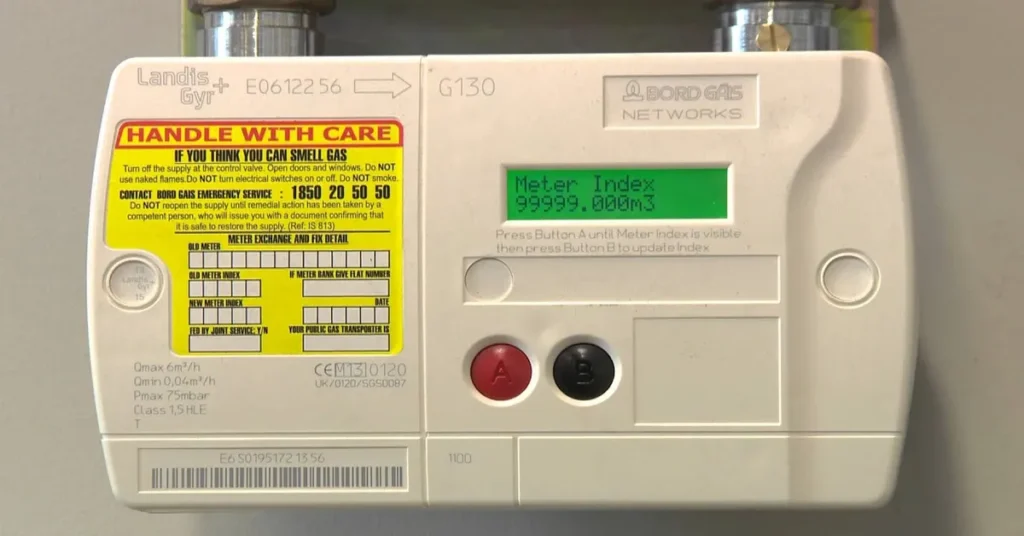Reading and understanding your gas meter might seem daunting, but it’s a useful skill for any homeowner. Knowing how to read your meter not only helps you keep track of your gas usage but also allows you to identify any potential issues with your gas supply. Whether you’re performing a routine Gas Safety Check in London or simply monitoring your usage, this guide will walk you through the basics of reading your gas meter and provide you with tips on how to interpret the information accurately.
Understanding Different Types of Gas Meters
Before diving into how to read your gas meter, it’s important to understand that there are different types of meters, each with its own method of recording gas usage. The most common types include dial meters, digital meters, and smart meters.
Dial Meters
Dial meters are older models and feature a series of dials that record the amount of gas used. Each dial typically represents a different place value, such as units, tens, hundreds, and so on. Reading a dial meter requires noting the number that each dial points to. When reading these meters, it’s essential to remember that if a dial is between two numbers, you record the lower number, unless the dial immediately to the right is on or past the zero, in which case you record the higher number.
Digital Meters
Digital meters are more modern and straightforward. They display your gas usage in a digital format, which is easy to read. These meters show the total amount of gas used in cubic meters or feet. To read a digital meter, simply record the numbers shown on the display.
Smart Meters
Smart meters are the latest innovation and offer the most convenience. They automatically send your gas usage data to your utility provider, eliminating the need for manual readings. However, you might still need to understand how to interpret the data they provide, as you can often view detailed usage information through an in-home display or online portal.
How to Read Your Gas Meter
Now that you are familiar with the different types of gas meters, let’s explore how to read each type effectively.
Reading a Dial Meter
To read a dial meter accurately, follow these steps:
- Identify the Dials: Look at each dial on the meter. They usually move in a clockwise direction.
- Record the Numbers: For each dial, note the number it points to. If the dial is between two numbers, record the lower number unless the dial to its immediate right has passed zero, in which case you record the higher number.
- Calculate Usage: To determine your gas usage over a period, subtract the previous reading from the current reading.
Reading a Digital Meter
Digital meters are straightforward:
- Locate the Display: Find the digital screen on the meter.
- Read the Numbers: Simply read the numbers displayed. They represent the total amount of gas used.
- Record Your Reading: Write down the numbers for your records or to share with your utility provider.
Reading a Smart Meter
Smart meters automatically track and report usage, but you may want to check the readings manually for personal records:
- Access the Display: Look at the in-home display or online portal associated with your smart meter.
- Review Data: The display will show current and historical usage data, often in easy-to-understand formats such as graphs or tables.
- Monitor Trends: Use the information to monitor your gas consumption and look for any unusual spikes or patterns.
Why Accurate Reading Matters
Accurately reading your gas meter is crucial for several reasons. Firstly, it ensures you are billed correctly by your utility company. Incorrect readings can lead to billing errors, which might result in overcharges or undercharges. By regularly checking your meter, you can spot discrepancies and address them promptly.
Additionally, understanding your gas usage can help you identify potential issues or inefficiencies in your home’s heating or cooking systems. For instance, if you notice a sudden increase in your gas usage without a corresponding increase in activity, it could indicate a problem with your gas appliances or leaks in your system.
Tips for Accurate Meter Readings
To ensure that you are reading your gas meter accurately, consider the following tips:
- Read Regularly: Make it a habit to check your gas meter at regular intervals. This helps you track your usage trends and catch any irregularities early.
- Record in Writing: Keep a log of your readings to compare with previous entries. This record can be invaluable for monitoring your consumption and managing your budget.
- Report Issues: If you notice any discrepancies or suspect a problem with your meter, contact your utility provider immediately. They can help investigate and resolve any issues.
Conclusion
Reading and understanding your gas meter is a valuable skill for any homeowner. Whether you have a dial meter, a digital meter, or a smart meter, knowing how to read your meter accurately helps you monitor your gas usage, manage your budget, and detect potential problems. By following the simple steps outlined in this guide, you can confidently interpret your gas meter readings and ensure that your home’s gas usage is accurately recorded and managed. Remember, regular readings and prompt reporting of any issues are key to maintaining an efficient and safe gas supply in your home, If you want to stay updated with posts like this, please follow us on ESPRESSOCODER.







